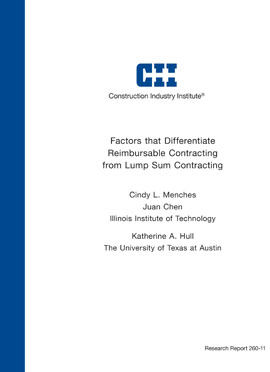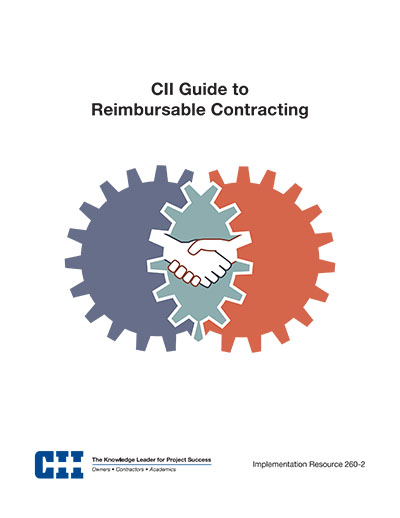
Factors that Differentiate Reimbursable Contracting from Lump Sum Contracting
From 2003 through 2007, the construction industry experienced strong growth resulting from a stable economy and expansion in the industrial and commercial sectors. This strong growth caused a significant increase in competition among owners to hire high quality contractors. This, in turn, caused many owners to search for new ways to attract the best companies and to develop strategies for building long-term relationships with those contractors that have a consistent record of completing projects on time and within budget while producing a quality end product. Consequently, to attract the best companies during the over-heated market conditions of the mid-2000s, many owners transitioned from using a fixed price contracting strategy, which shifts more risk to the contractor, to using a cost reimbursable contracting strategy, in which the owner assumes a greater amount of risk. After 2008, however, the decline in the economy resulted in a transition back to a broader usage of fixed price contracts because competition among contractors for a significantly smaller pool of projects made it possible for owners to shift more risk to the contractors yet still attract high quality companies. Unfortunately, some projects that implement a fixed price contracting strategy possess characteristics that would make a reimbursable contracting strategy a more appropriate choice. However, understanding when to use reimbursable contracting rather than some other contract strategy to improve performance, and how to successfully implement a reimbursable contract, requires analyzing a complex set of factors prior to making a contracting decision.
In early 2008, the Construction Industry Institute formed the Reimbursable Contracts research team (RT 260) to study the factors that make reimbursable contracting successful for both owners and contractors. The research had two primary goals: 1) differentiate reimbursable contracting from lump sum contracting for EPC projects, and 2) identify characteristics of successful reimbursable contracting practices used on EPC projects.
The research team investigated the differences in practices between reimbursable and lump sum contracting from the aspects of contracting strategy selection, risk allocation, contractor selection, contract development, contract management, and controls. Specifically, the research team sought to identify those practices used in the implementation of reimbursable contracting that make the process successful for all parties. A variety of research tools, such as case studies, questionnaires, Benchmarking and Metrics (BM&M) dataset analysis, and expert elicitation, were used by the research team. The resulting product of the research is an implementation resource called Reimbursable Contracting Guide (the Guide), which provides both owners and contractors with guidance on the contractual and managerial structures that contribute to successful reimbursable projects. Organizations will be able to use the results to augment their implementation of reimbursable contracts so that both owners and contractors can remain competitive regardless of market conditions.
The Guide, which is geared toward less-experienced members of owners’ and contractors’ project teams, defines several reimbursable contracting strategies and outlines a process for owners to select the strategy and the contractor most suitable to execute the work. The Guide provides suggestions for allocating the risk between the parties, as well as identifying the differences between lump sum and reimbursable contracting. Further, the Guide offers assistance to the owner during contract development, management, and controls.
The research team identifies twelve key findings that distinguish a reimbursable contract strategy from a lump sum contract strategy. One of the key findings stresses the importance of providing clear definition of the cost reimbursement compensation structure. Once the structure is established, experienced personnel and strong project controls become the essential components to successful project execution. The Guide provides helpful considerations and sample language to achieve this objective.
Case studies interspersed throughout the Guide, with both positive and negative outcomes demonstrate pitfalls to avoid, as well as key elements for incorporation into the contract itself and considerations for its implementation.
Assignment of personnel with experience in cost reimbursable contracting, combined with transparency and integrated owner-contractor decision-making, strengthen the potential for successful reimbursable contracting outcomes.
In conclusion, the differentiations between lump sum and reimbursable contracting strategies and the characteristics of successful reimbursable contracting practices have been identified through this research. The research team recommends utilization of the Reimbursable Contracting Guide by the owners’ decision-making team when considering implementing a reimbursable contracting strategy. Further, the research team recommends the Guide to a contractors’ organization as a means to familiarize and align itself to the owner’s strategic objectives in selecting a reimbursable structure.



